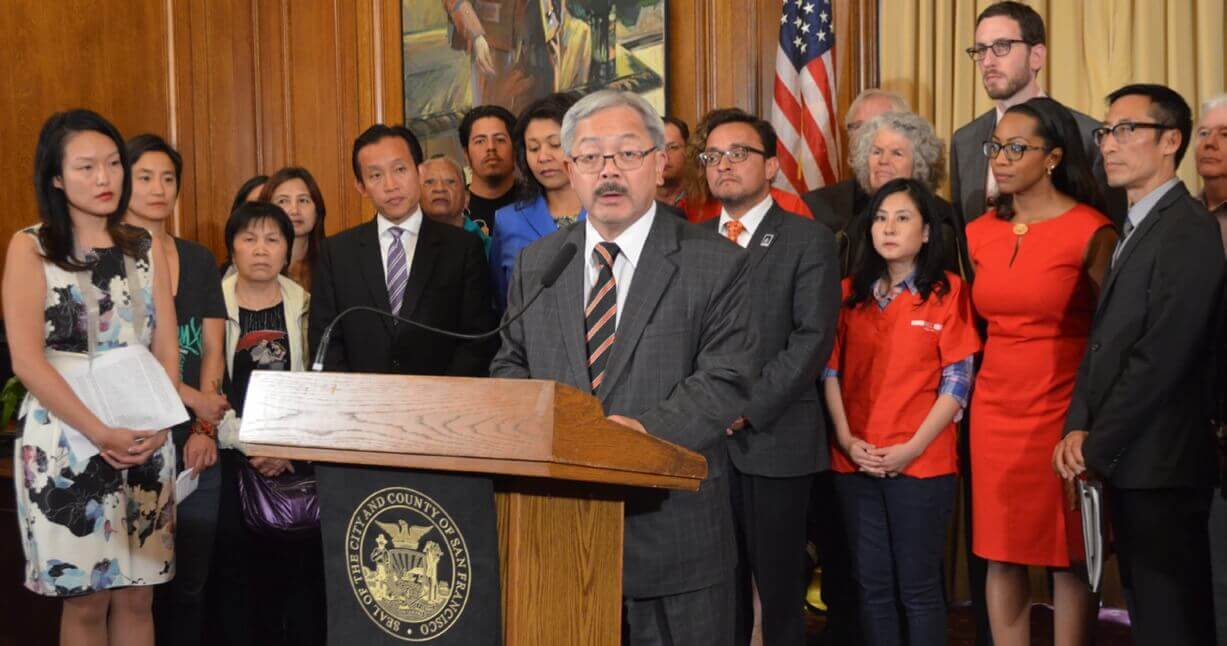San Francisco OMI Eviction Updates
By DANIEL BORNSTEIN, ESQ.
[apss_share]

We wanted to remind landlords of the changes that have taken place not so long ago with San Francisco Owner Move-In Evictions, also known as OMI, or Relative Move-In Eviction. The Rent Ordinance was amended to afford tenants greater protections when the owner wants to transition them out of the rental unit for the landlord’s personal use.
Following the numerous procedures when relocating tenants through an Owner Move-In Eviction has always been vitally important, but the amendments to 37.59 of the Ordinance add new layers of requirements for rental property owners. It also escalates penalties for landlords if it is discovered that the owner did not effectuate an OMI eviction in good faith, for use as their principal residence – or the principal residence of a relative – for a period of at least 36 continuous months. Some of the rules went into effect August 2017, while other OMI Ordinance Amendments create new requirements for OMI notices served on or after 1/1/2018. Read all of the amendments here.
We've prepared a comprehensive OMI Eviction Guide. Get your copy here.
We wanted to highlight a couple notable changes, first being the level of oversight by the Rent Board. The rental property owner must file a “Statement of Occupancy” form with that body within 90 days after the date of service of an OMI notice, with updated documentation every 90 days thereafter until the unit is repossessed by the landlord, but it doesn’t end there. Once a year for five years after the recovery of possession of the unit, the landlord-turned occupant must check in with the Rent Board to once again show that the underlying OMI Eviction was made in good faith.
In this respect, we see a parallel with regulations relating to Airbnb and short-term rentals, inventory that the city was inept at enforcing until new rules were put into place. Similarly, the recent OMI Ordinance amendments give teeth and new enforcement tools to the Rent Board, and like Airbnb hosts, the “party is over” for a small group of landlords that formerly used an OMI Eviction to invite other tenants into the unit for higher rent.
Secondly, there is an ominous extension of the statute of limitations for a wrongful eviction lawsuit following an OMI eviction, from one year to five years. Wrongful eviction suits are proliferating throughout the Bay Area and are insidious for landlords because regardless of the merits, these actions can easily rank up tens of thousands of dollars in court costs and attorney fees. For this reason, Daniel Bornstein admonished rental property owners to take a hard look at their insurance policy and obtain wrongful eviction protection if it is not already included.
.
In parting thoughts, we advise our clients not to be penny wise and a pound foolish. Other things being equal, a tenant buyout is always preferable to an OMI Eviction because by giving compensation to the tenant in exchange for voluntarily leaving the premises, you are not only paying for the tenant to leave, but for the release of legal claims down the road. Although the city has attempted with varied success to meddle with these type of arrangements, the landlord is on more solid legal ground with a buyout arrangement, and the courts have been more favorable to property owners when litigation ensues. Another advantage to a tenant buyout is this arrangement can be entered into outside of court. Best brokered, of course, by a qualified real estate attorney.
If you found this article to be informative, follow us on Facebook to continue the conversation and get the latest news and insights impacting Bay Area property owners and real estate professionals.
 As the founding attorney of Bornstein Law, Broker of Record for Bay Property Group and expert witness, Daniel Bornstein is a foremost and well-respected expert in landlord-tenant disputes and other property management issues with over 23 years of experience in handling real estate and civil litigation related disputes in and throughout the Bay Area. More than a litigator, Daniel manages rental properties, assists in completing real estate transactions and is well known for his educational seminars. He is always eager to answer questions and engage with Bay Area landlords, property owners and real estate professionals. Email him today.
As the founding attorney of Bornstein Law, Broker of Record for Bay Property Group and expert witness, Daniel Bornstein is a foremost and well-respected expert in landlord-tenant disputes and other property management issues with over 23 years of experience in handling real estate and civil litigation related disputes in and throughout the Bay Area. More than a litigator, Daniel manages rental properties, assists in completing real estate transactions and is well known for his educational seminars. He is always eager to answer questions and engage with Bay Area landlords, property owners and real estate professionals. Email him today.

